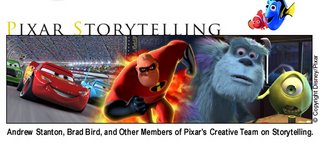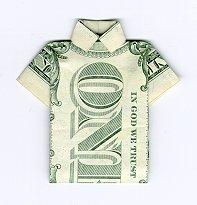I started the panel by asking Geena to describe where See Jane came from, and to summarize their first study. . .
Geena Davis: "See Jane" started when I noticed, while watching G-rated movies and shows with my daughter, and I was stunned to see there was still a huge gender imbalance, pretty much when I was a kid and the only female Loony Toons character was Granny who's job was to leave. I did my own unscientific study, and the ratio of males to females was 4 or 5 to 1. And I'm sure you've heard the adage: "Girls and women will watch stories about men and boys, but boys won't watch stories about girls...so we have to make the majority of our movies about male characters." But I started thinking: "What if kids were exposed to G-rated films where females took up half the space?" And I decided I wanted to form "See Jane" to try to do something about that...
We commisioned the largest study ever done G-rated film at Anenberg, and took the top grossing G-rated films from 1990 to 2005...and the results confirmed my unscientific analysis. The ratio was about three to one, male to female characters, and if you take into account all the townspeople and the whole environment, the percentages are around 70% People come up to me all the time and say: "Well, things are getting better, right?"The answer is "No." The reality is, things aren't getting better. Gender disparity happens in G-rated films made by all companies, and the data is exactly the same if you compare films from 1990-1995 to those from 2000-2005. All entities who made G-rated films across the board were equally guilty. In the final analysis, only 7% of the films had anything close to gender parity.
Fred Seibert: I'm not at all surprised. I've been in the business for fifteen years, and one of the first reactions I had in the business was how much it kind of hated everybody but old white men. It hated young white men, black people, women, any people of color, anybody who wasn't an old white man. The films and the programming are a reflection of the people who are making it, and a reflection of the people making the decisions....so I don't think any of us are really surprised.
Brenda Chapman: It doesn't surprise me, either. I've been in the industry for sixteen years. In 1990, there were 4-5 women in my CalArts class of ninety [I recall that Brenda's class was much smaller, like 40]. So this points, to me, to an even bigger issue. It seems to me that a lot of women are not even interested in animation, at least character animation, which is considered the commercial aspect. What's interesting to me is, back then, in experimental animation, 3/4 of the students were women. Go figure. (Jill and Jenny, also recalled that females made up less than 10% of their classes at CalArts.) Of portfolios we receive at Pixar, less than 10% are from women.
Jill Culton: I was the token female when I started in the business. Very few women seemed to be interested in character animation, though a lot more were interested in experimental.
Jenny Lerew: I fell between Brenda and Jill at Cal Arts, in 1987. I was asked from my first week at Warner Bros. Animation in 1989, where I worked on "Tiny Tunes" I was asked almost from the first week I was there: "Why are so few women in the business?" I have no idea. In television there are more women working in story, in series and in home-video. There's a little more opportunity there, and I don't know why that's the case.
Those things are very script driven, and they don't have as much control as we do in features in shaping the story. But you're always at the mercy of who's driving the story. A lot of the times the goals that I have working in story is exactly as the guys have...we got into this business for exactly the same reasons. When I was a girl who just identified with boy cartoon characters because that's what there were when I grew up. I pretended to be Mowgli as a kid, running around the house in my underpants. And I think small girls still do that...
Dean De Blois: My theory is that boys hang onto their childhoods, and a fascination with comic books changes to a fascination with animation. A little bit of a geekiness. If you walk around the studios' cubicles you'll find the toys are all collected. But I'm very appreicate of all the women we work with. In my first year of college there were maybe three women in my class. Women seemed to go into the fine art aspect. After Gina's presentation I realize just how striking the disparity is.
Chris Sanders and I channeled women for "Lilo and Stitch." "Lilo and Stitch" started as a story (by Chris) about an alien in a forest with forest animals. And he learned to make animal and forest sounds. Then the story line became the alien with a little boy in Kansas, then a little girl in Hawaii. [Dean didn't remember any particular pressure to "boy up" the film, and the transition to a girl character came naturally out of the story development. ]
Jill Culton: I was developing Monsters, Inc" at the same time "Lilo and Stitch" was in development. We had developed "Monsters, Inc." as a relationship between a father and a little girl, it just felt right. But Disney suggested that the human kid character in "Monsters, Inc." be changed from a little girl to a little boy. I found out later Disney was afraid it would be too much like "Lilo and Stitch"...
Brenda Chapman: At the start of my career, I was the only woman in the story department at Disney, but at that time we were working on "Princess movies" with strong female leads, so at the time there didn't seem to be any need to strengthen other female roles...most of the funny characters were guys....But now I'm at Pixar, and there films are very much for the boys. I don't think it's a conscious thing, I just think they're making fillms they want to see.... Joe Ranft asked me to come up to Pixar to work on the female character in "Cars" to make her ring more "true." Pixar is something of a "boy's club", and little thought seems to have been given to female characters, even when it would have fit naturally. For example, why couldn't the Slinky or the T-Rex in Toy Story have been women? [Brenda's business card reads "Token female Pixar story person," but now that she's directing there aren't any women in Pixar's story department.]
Jenny Lerew: And aren't cars usually designated female, like ships. But almost all the cars in "Cars" are male.
[In another example of what some might consider job stereotyping, Jill recalled being assigned sequences involving the character Jessie in Toy Story 2 while she was at Pixar.]
Jill Culton: Studios worry about female characters, and they don't want stereotypes. Females can't be too pretty, but not ugly either. Can't be bookish, but can't be stupid. There are so many landmines. [My observation here was that, when a film only has one significant female character, then that character can't be allowed to be too distinct, because it's representing the entire gender.]
Geena Davis: Why can't the funny sidekicks be female? Then they could be anything creators wanted.
Jenny Lerew: Guys don't think about male/female ratios.
Jill Culton: "Open Season" started as two male animals in woods. One of the things we worked hard on is to give some originality to the "mother" character (Beth, voiced by Debra Messing), make her different...
Brenda Chapman: In the stage show of "Lion King," they made Rafiki a female. When I saw it I thought: "Why didn't I think of that?" (She credited Roger Allers for the change, but Allers said it was Julie Taymor.)
Geena Davis: It would be interesting if "Ice Age," were relooped with all female voices. Without changing the look, the characters could be all females. It would still work.
Fred Seibert: My first network pitch as a cartoon studio exec was to a woman. She said about one of the female characters, "make her breasts bigger," but she didn't use the word "breasts." I couldn't believe she was talking like that, and I thought maybe I should pack up my boxes in my office and go back to New York right there. And I remarked that I couldn't believe she was talking like that. And she said "Big [breasts]. Boys like 'em and girls want 'em."
For the Frederator shorts program, up until the last couple of years, I had maybe five pitches by women out of 5000. And four of those I had to beg the women to make. And the pitches weren't very good, probably because they weren't too enthusiastic about making them. But in the last two years, I've gotten hundreds of pitches from women under 35. So all of a sudden, the odds have gotten way better. [Out of the first 99 shorts greenlit, only one involved a female creator, and that was as part of a wife/husband team. Of the last 39 shorts greenlight, 8 were by 10 women creators.]
Some of the women's pitches are with males, some with females. One was about a babysitter. Not the usual story, with the babysitter being tied up and set on fire. Because she'd been a babysitter. What guy is going to think of the babysitter as a real character?
Women are going to make the changes in gender balance. It's not going to come from having gender balance in movies.
Jill Culton: It takes years to learn the craft. How do we get more women into the craft? Into the schools and colleges?
[No one had any great answers to this, except to again note that art departments and experimental animation programs are often predominantly female, yet there seems to be a disconnection in more industry-oriented programs. On the other hand, Jill noted that the last time she visited CalArts that there were many more females in the animation classes. Interestingly, it wasn't just more females, but especially Asian females, which she thought was likely related to the popularity of anime, and the higher esteem for animation, and female-driven stories, in Japan.]
Jill Culton: I think, yeah, women have to try harder when they get in the business. But if you're kick-ass good, they can't deny you. You're wearing the cloak of your talent...
Dean De Blois: We have to be conscious of the stories and the characters filling those stories.
Fred Seibert: If people want to change the world, they have to make their own films. I've been looking at a lot of indie films, over a thousand, and the people that make them have their own points of view. There are people out there doing it.
Geena: Boys and girls all go to see the same movies, they all share the same sandbox.
[I know the above contains some bits and pieces out of context, and without the ancillary comments from other panelists, but it's meant to give a sense of what was discussed. We then went on to Q&A with the audience, which was more about industry pros making some excellent points rather than really asking questions. The Chicago Tribune sent a reporter and a photographer to the event, so hopefully we'll see their take on the event soon.]
Addendum: If you click on Jenny Lerew's name above, you'll link to her panel recap on "The Blackwing Diaries." I was a little afraid when we posted these notes that, because there were grossly incomplete, they might give a false perception of the event. Given the choice to simply write "You had to be there," or try to provide our own summary of the thoughts and opinions of 7 different people, we chose to give you the notes we had. Unfortunately, those notes contain none of the nuance that one would have felt in person at the discussion, and it's easy for statements to sound harsher in print, or to take on a different valence.
When I first posted this I also failed to emphasize, as I think I've done repeatedly in the comments sections of related posts, that NONE of the women on the panel, or among the commenters in the audience, expressed a sense of having been discriminated against in the industry. Anyone who was expecting male bashing, or complaints about being mistreated by male coworkers or producers, would have been disappointed. The female panelists all expressed great praise and affection for the guys they work with. And several acknowledged that they, like their male counterparts, had themselves often not paid particular attention to creating more and better female characters.
There were also surprisingly few complaints about the system of animated filmmaking. Despite my proddings, we didn't hear stories of studio execs telling directors and story artists not to create female characters. Instead, the women who spoke during the discussion expressed a lot of pride and satisfaction in their work and the industry in general. There was really no "bashing" at all (well, Fred had some pretty harsh words for some of the powers that be, but he also sees that changing rapidly).
To my ears some of the themes I heard from the female creatives was the need to be more encouraging of other women, especially those thinking of entering the industry; that it would have been very gratifying to have grown up with some female characters to identify with; and that it would be nice to work on films where the female characters aren't usually afterthoughts. I hope some of the others who attended the panel can speak to what they got from the panel in the comments section.
The audience was at capacity even before the panel started.

Brenda Chapman and Jill Culton

Fred Seibert

Geena Davis and Kevin Koch













































